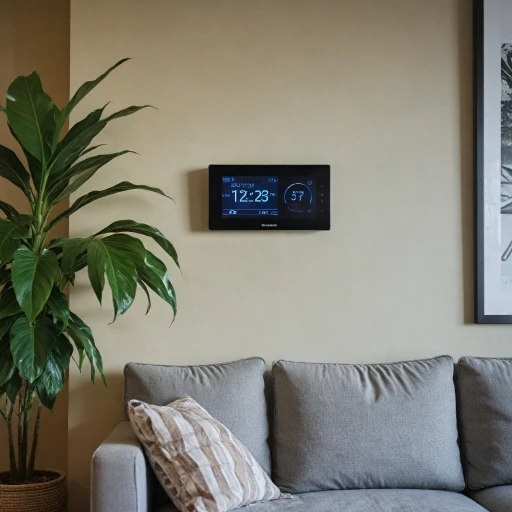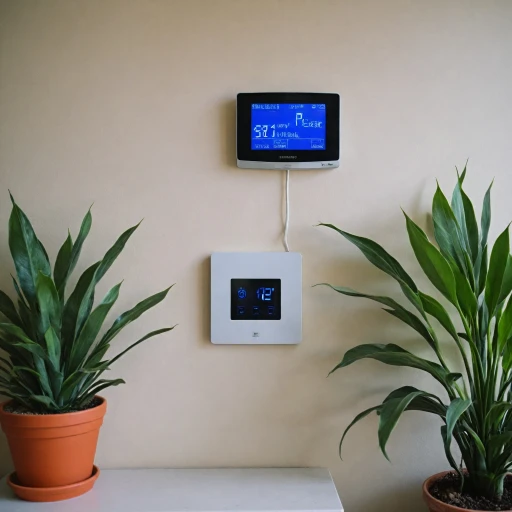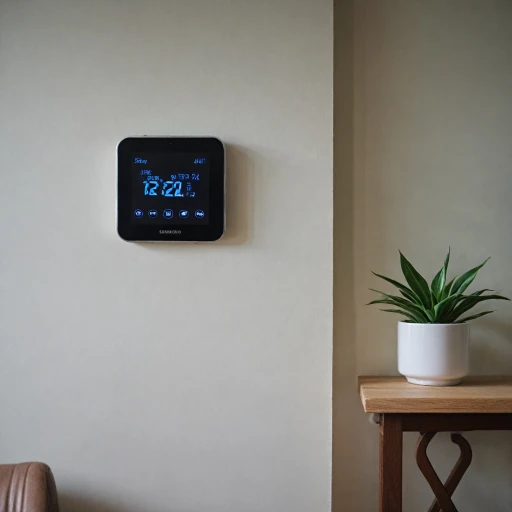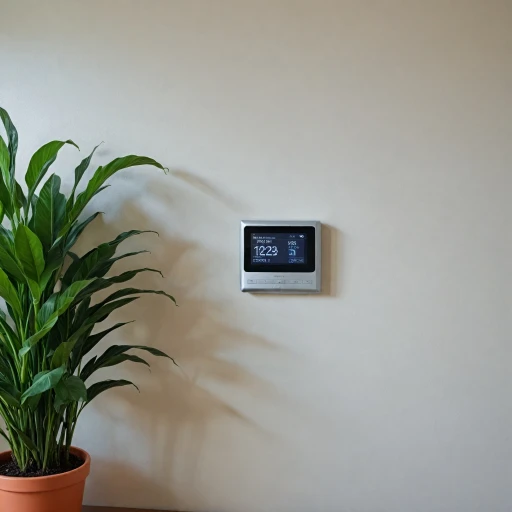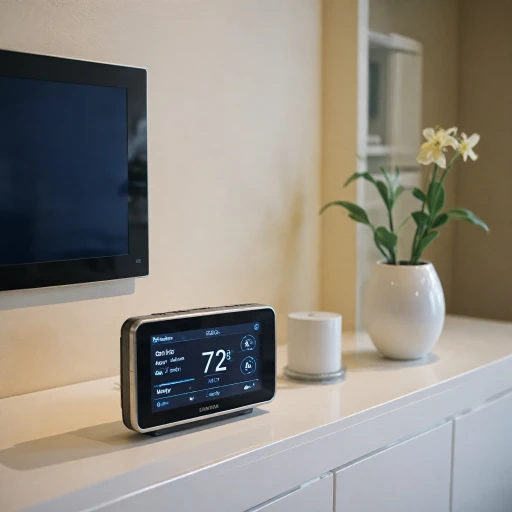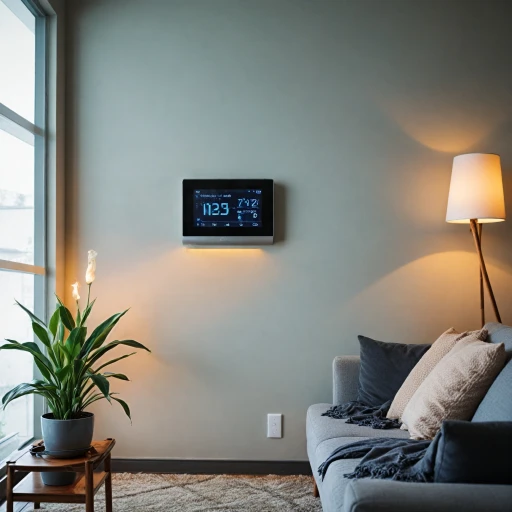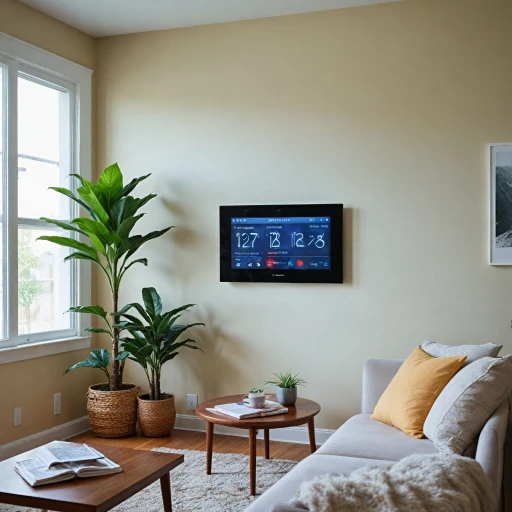Understanding the Basics of RV WiFi Thermostats
{"
Introduction to WiFi Thermostats for Your RV
WiFi thermostats, commonly known as smart thermostats, have revolutionized how we maintain comfort in residential spaces. These devices allow you to seamlessly control the temperature in your RV from anywhere with an internet connection. Whether you own a Dometic Duotherm or an EasyTouch thermostat, understanding these devices can enhance both your travel and living experience.
Smart thermostats such as the Dometic Comfort or the Coleman Mach offer advanced features like touch screen displays and the ability to adjust different climate zones within your RV. The added convenience of WiFi Bluetooth compatibility allows for easy integration with your mobile devices, giving you the freedom to adjust your RV’s climate settings remotely.
The need for a wifi thermostat in an RV goes beyond convenience; it addresses crucial aspects such as energy efficiency and comfort. RVs, by design, can experience rapid temperature changes, making the need for a reliable climate control system essential. With products like the Micro Air EasyTouch, you can easily manage your RV’s air conditioner and heat settings with just a few taps on your smartphone, bringing both functionality and style in options such as black and white.
While you may find these thermostats across various shops and online platforms like Amazon, the key is understanding the features that best suit your needs, whether it's a programmable thermostat or a model offering a micro control system. It’s not just about the price; it’s about enhancing your comfort.
For those interested in a systemic understanding of smart thermostats, studying different models helps. As noted in Understanding the Ranco Temperature Controller as a Smart Solution, the versatility and adaptability of these thermostats can significantly enhance your RV experience.
In the upcoming sections, we will delve deeper into the features, benefits, and installation processes, aiding you in making the best out of your RV's wifi-enabled thermostat.
Key Features to Look for in an RV WiFi Thermostat
Identifying Must-Have Attributes
When selecting the ideal WiFi thermostat for your RV, certain features can greatly enhance your overall experience and offer multiple advantages. Here are essential attributes to consider:
- Temperature Control: The thermostat should allow precise regulation of temperatures with options for programmable settings. Products like the EasyTouch thermostat or Coleman Mach models offer seamless comfort control.
- WiFi Connectivity: Opt for a thermostat that provides strong connectivity, enabling remote access via smartphone apps. This ensures you can adjust settings from anywhere, making it easier to manage your RV's climate.
- Display and Interaction: A touch screen interface simplifies interactions. Models featuring a digital thermostat display can enhance usability and are typically available in colors like black or white to match your RV aesthetic.
- Compatibility: Ensure the thermostat is compatible with your RV systems. Products like the Dometic Comfort Control or Dometic Single Zone thermostats are designed to integrate smoothly with existing setups.
- Programmability and Smart Features: Many modern thermostats, including the Dometic Duotherm and Micro Air models, include programmable options and may even offer voice control through integration with smart home systems.
Incorporating Advanced Functionalities
In addition to basic functions, consider models that provide advanced features:
- Zone Control: Being able to manage temperature across different zones maximizes your comfort. Single zone and more complex systems are available based on your RV needs.
- Bluetooth Enabled: Supplementary connectivity, such as WiFi Bluetooth enabled, enhances flexibility in managing your RV environment.
- Ease of Use: Look for systems with intuitive controls like the Dometic Button system or models with easy-to-use interfaces.
Exploring a selection of
WiFi thermostats designed for RVs could further assist in highlighting the right choice for you. Whether you're after the simplicity of a single zone model or the sophistication of a product like the Micro Air EasyTouch thermostat, matching your needs to the available features can ensure a more comfortable travel experience.
Benefits of Using a WiFi Thermostat in Your RV
Reaping the Rewards of Smart Temperature Management
The growing popularity of WiFi-enabled thermostats for RVs is driven by several compelling advantages, making them an appealing addition to your mobile home. A smart thermostat, like the Dometic Comfort Control or Micro Air EasyTouch, offers countless benefits that enhance convenience and efficiency.
Firstly, these thermostats provide unparalleled control over your RV’s climate. By using an app on your smartphone or another device, you can adjust the temperature remotely, ensuring your RV is at the perfect comfort level before you even step inside. Whether you’re dealing with the sweltering heat or chilly nights, having control at your fingertips adds a new level of comfort to your travels.
In addition to remote control, models like the EasyTouch thermostat are known for their user-friendly interface. The touch screen displays information clearly, and the programmable thermostat settings allow for tailored temperature scheduling throughout the day. Say goodbye to manual adjustments and hello to energy efficiency.
Moreover, smart thermostats such as those from Dometic and Coleman Mach are designed for compatibility with modern technology standards, including WiFi and Bluetooth. This connectivity ensures seamless integration with your RV’s existing systems, as well as any future upgrades you might plan.
Another advantage is the ability to manage different climate zones within the RV. Some thermostats accommodate single zone control, ensuring that every section of your RV is comfortable. This feature is especially beneficial if you’re sharing space with others who may have different temperature preferences.
Notably, integrating a smart thermostat into your RV can lead to energy savings, as the precise control minimizes unnecessary usage of your air conditioner. This advantage not only extends the life of your appliance but also reduces costs over time.
Lastly, with a wide range of options available, price points vary, allowing you to shop for a thermostat that fits both your need for innovation and your budget, whether that model is from Amazon or another supplier.
For those exploring options, understanding what to look for in a smart thermostat or determining compatibility with other technologies like Alexa can enhance the decision-making process. Learn more about
smart thermostats compatible with Alexa.
Installation and Setup Tips for RV WiFi Thermostats
Effortless Installation Tips for Every RV Enthusiast
Installing a WiFi-enabled thermostat in your RV is a straightforward process, yet it requires attention to detail to ensure optimal performance. Follow these tips to make the installation process as smooth as possible, enhancing your RV's comfort control system.
- Choose the Right Model: Make sure to select the right thermostat model that is compatible with your RV's HVAC system. Products like Dometic, Coleman Mach, and EasyTouch offer options that cater to various air conditioning setups, including single zone or multizone systems.
- Gather Necessary Tools: Prior to commencing the installation, ensure you have the appropriate tools on hand. Basic tools may include a screwdriver set, wire strippers, and a voltage tester. Check your product's manual or consult the inventory management system of your shop to confirm you're prepared.
- Disconnect Power: Always turn off the power to the air conditioner's system before starting the installation to avoid any electrical hazards.
- Remove the Existing Unit: If replacing an existing thermostat, gently remove it by unscrewing and disconnecting the wires carefully to prevent any damage. Note the wiring configuration, as you'll need this information to connect the wires to your new thermostat.
- Mount the New Thermostat: Align the new thermostat, such as the EasyTouch thermostat, on the wall, mark the screw positions, and drill holes if necessary. Secure the unit with screws but make sure not to over-tighten them as it might damage the thermostat casing.
- Wire the Connection: Follow the manufacturer’s wiring diagram to connect the wires accurately. Each wire should fit snugly into its designated terminal; double-check the colors and labels.
- Power Up and Configure: Once connected, turn the power back on and test the system. Configure the thermostat settings using the touch screen interface; ensuring the comfort control settings meet your requirements.
- WiFi Setup: Connect the thermostat to your RV’s WiFi network, which might involve entering IP-based information. This step allows you to regulate the temperature remotely and ensures the Bluetooth enabled features function.
With these steps, your WiFi thermostat can be fully operational, allowing you to enjoy effortless temperature control and comfort during your RV adventures. Various models such as the Dometic Duotherm and the Micro Air EasyTouch ensure adaptability and convenience, enhancing your overall RV experience.
Troubleshooting Common Issues with RV WiFi Thermostats
Dealing with Connection Challenges
One of the most common issues with RV WiFi thermostats is connectivity. When your thermostat struggles to stay connected, your control over the air conditioning and heating systems can get disrupted. Make sure you have a strong WiFi signal within your RV to maintain a stable connection. If you're using a Dometic product or any other model from the Coleman Mach line, ensure that your WiFi and Bluetooth settings are correctly configured. You might want to consider upgrading to a WiFi booster if your signal is weak.
Addressing Power Supply Problems
Power supply issues can affect the functionality of your smart thermostat. It’s crucial to check if the thermostat is properly wired and receiving adequate power. Ensure that your Dometic button and other connections are secure. If your model is a Dometic Duotherm or similar, consulting the user manual for power requirements can be helpful. Problems with micro air components may require you to reset or recalibrate the system.
Calibration and Temperature Discrepancies
Temperature discrepancies are another problem commonly encountered. Ensure your thermostat is accurately calibrated to provide the correct readings. Whether it’s a black or white thermostatic model, check that the touch screen is responsive and that the programmable thermostat settings are accurately set. For products like the digital thermostat or the EasyTouch Thermostat, performing a calibration can often solve temperature-related issues.
Firmware and Software Updates
Firmware updates can resolve many bugs and enhance the overall performance of your thermostat. Regularly check for updates either on the product’s official website or through the Amazon shop where you purchased it, for significant enhancements in zone control functions and integration with other smart devices. If your model is equipped with micro air features, software updates can also improve inventory management of single zone systems.
Comparing Popular RV WiFi Thermostat Models
Assessing Different Thermostat Options
Selecting the right RV WiFi thermostat requires understanding the options available and their unique features. Here's a comparison of some popular models to guide your decision:
- Micro Air EasyTouch: Renowned for its intuitive touch screen and compatibility with many air conditioners. It offers both Bluetooth and WiFi connectivity, making it easy to control the temperature from your smart device. Despite its higher price point, it provides comprehensive comfort control.
- Thermostat Dometic Models: Known for their reliability, these thermostats come with various features. The Dometic Duotherm and Dometic Comfort Control models offer programmable settings to maintain desired temperatures efficiently. If you're considering a digital thermostat, Dometic Single Zone could be the one to shop for.
- Coleman Mach: A notable contender, offering easy installation and inventory management capabilities. It's a practical option for those looking for entry-level features at an affordable price. While it may lack the advanced features of higher-end models, it's a solid choice for a straightforward solution.
By understanding your priorities, whether it's ease of control, price, or installation simplicity, you can better determine which product best suits your RV setup. Remember, each model's unique features must align with your comfort and control needs when looking to enhance your RV experience.

